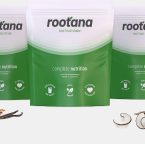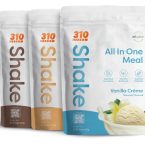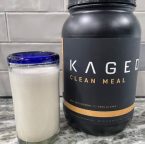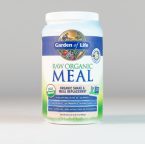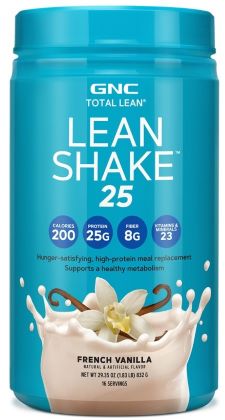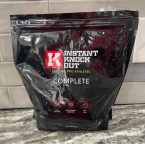Meal replacement shakes live up to their name by being viable food sources for athletes and those who want something quick, nutritious, and easy to prepare.
The question is, have meal replacement shakes evolved to a point where they can completely replace the food we eat? Is it now possible to live on them alone instead of real foods and workout supplements?
Is meal replacement the food of the future? Let’s take a look at the pros and cons.

Meal Replacement Pros
Athletes Can Benefit Greatly From Them
Athletes tend to rely on what they eat to power up in terms of strength, speed and stamina. It’s worth noting that they tend to consume more calories and protein than the average person. However, they can’t be expected to waste their time chewing on chicken or meat, or slurping down protein shakes and tons of vegetables just to get more calories and nutrients, can they?
The same dilemma applies when you’re eating out or cooking meals at home. You could have made a healthy meal only to find out it doesn’t contain the calories you need. When you’re out and about, it’s mostly a guessing game or choosing the biggest serving of a particular food that you know won’t be healthy.
So, where can athletes get thousand-plus extra calories? Meal replacement seems to be the likeliest answer. There’s no more scrambling to count calories or go into desperation mode when you find out you need more to end the day.
Calorie Counting is Made Easy
Do you often find yourself hunkered down with a calculator, seeing how many calories you’d get with a meal you’re about to eat?
This doesn’t just apply to those trying to gain weight to convert into lean muscle but also to those trying to burn excess fat using calorie deficit. It becomes tedious after a while unless you have a meal program set for the foreseeable future.
Instead of throwing the diet out the window and going with your gut feeling, you can opt for meal replacements. Depending on the type of meal replacement product you get, you can easily add or take away calories per your fitness goal (adding to bulk up or getting just enough to slim down) and simplify the process.
Meal replacement shake can give you around a 300 to 500 calorie intake in one sitting, which is roughly a third or fourth of a dieter’s daily caloric needs. There are no guesstimates required and no need to bring up the calculator every time you sit down to eat. This makes it easier to consume fewer calories for weight loss.
You Don’t Have to Cook
We know how busy everyone is these days, and it seems like the days are getting shorter. Meal preparation isn’t what it used to be, and people are turning to fast food and delis to get by.
About 30% of Americans don’t know how to cook, and 85% consider it to be a chore. With how everything is convenient these days, we can’t really blame them. However, consuming empty calories on a daily basis tends to blow up the flab and lead to obesity.
Short of rediscovering your love for food and taking the time to prepare healthy meals, you can choose the right meal replacement that will give you what you need, nutrient-wise without having to fire up the stove. Plus, you won’t have to worry if the food you’ll be cooking has a thousand calories or just a hundred- with meal replacement, you just have to read the label and get a glass of water (or milk), then chug away!
You Don’t Have to Chew
Aside from not needing to cook to get your calories, you won’t have to chew them with meal replacements either.
Expanding on the ‘convenience’ factor of meal replacements, you won’t have to spend excessive time going through hundreds of calories. A noteworthy example is when you’re eating vegetables- eating a plateful in one sitting can be too much work. However, you just need to add a heaping spoonful or two with a shake, and you should be good to go.
Drinking is much easier than chewing, and if this sounds like you, then a meal replacement shake is probably a good option.
It Contains Essential Omega-3’s
What separates meal replacement shakes from traditional snacks is that they offer a well-rounded spectrum of nutrients, which include omega 3.
While it’s true that you need to focus first on the macros carbs, protein and fat, you’ll also need to pay attention to vitamins and minerals, and calories too. Fatty acids are largely responsible for keeping your system healthy, particularly your immune system and level of inflammation, and as such it’s important to have them in regular amounts in your diet.
Fish are often the go-to source for omega 3, but if you can’t readily procure or cook them, meal replacement shakes sshould suffice.
It Covers Your Nutritional Deficiencies
We can’t stress the value of well-rounded nutrition enough. Regardless of whether you’re trying to build muscle or lose weight, you should always have a side of vitamins, minerals, healthy fat and phytonutrients for good measure.
Meal shakes offer similar benefits to a multivitamin supplement in that it tries to plug up nutritional deficiencies. We know that it’s impossible to get all essential dietary nutrients on a daily basis, so the next best thing is to try a well-balanced diet and shore up the rest with supplements.
Some of the things we need that are lacking in most diets include magnesium and vitamin D. Magnesium is found in leafy greens. In contrast, vitamin D can be absorbed via direct sun exposure. Both are essential factors for bone development, mood and sleep.
Cons of meal replacement
No Phytochemicals
Meal replacements aren’t a perfect replacement for whole foods, not by a long shot. While it’s true that you can get important macros such as calories, carbs and vitamins and minerals, there are still a few more noteworthy mentions, including fatty acids and phytochemicals you’ll need to become healthy.
Plant-based chemicals such as lycopene and isothiocyanates can be found in tomatoes and cruciferous veggies and play an important role. However, these phytonutrients are largely absent in most replacement shakes.
The good news is that they’re still relatively easy to obtain. Eat several servings of fruits and vegetables regularly so you get essential fiber, vitamins and antioxidants in your diet.
It’s Behind in the Calorie and Protein Department
There’s really no one-size-fits-all approach when it comes to diet and nutrition. It all depends on what you need and what you’re aiming for.
You could be into keto, which requires high fat and low carbs, or an athlete who needs several thousand calories to keep competitive. You need lots and lots of protein if you’re building muscle or vitamins and minerals if you simply can’t find the time to eat vegetables and fruits.
Many meal replacements depend on the FDA’s recommendation and RDIs, but for particular macros such as protein and calories, you’ll want to take a targeted approach.
Also, most of them are into eight loss’ niches and offer low-calorie counts in every packet or scoop. In this case, they won’t do better as snacks than traditional ones, which can be a real problem for those who want a calorie surplus instead of a deficit.
However, the meal replacement shake industry is catching up on these things and they’re working to improve their products to cater to a variety of audiences. The idea here is for consumers to dig deeper and find the best meal replacement shake that fills in the exact nutrients they need.
Meal Replacement Shakes – What You Should Look For
The Right Mix of Macros
Meal replacements are a dime a dozen. To get the most of your investment, you should research what ingredients go in a particular supplement. Specifically, you’ll want to consider how much carbs, protein and fat you’re getting from it.
To get a balanced meal, you should consume a significant amount of protein and healthy fats. Otherwise, it can’t really be a ‘meal replacement’.
Fiber is Important
Don’t forget that you should still get fiber and prebiotics or probiotics for well-rounded nutrition. The best meal replacement is one that benefits your gut or immune system so you can absorb more and clean out your system of waste.
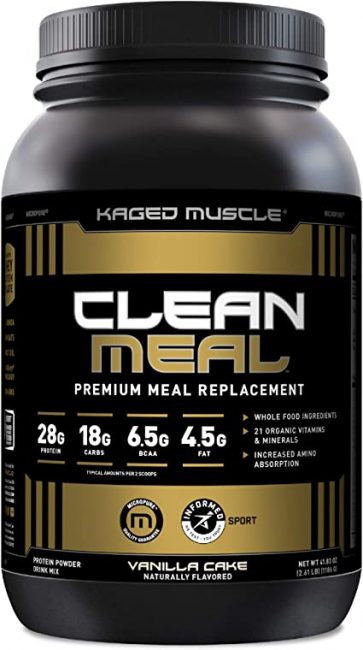
More Vitamins and Minerals, the Better
Take the smart approach and get a two-for-one meal replacement that has the macronutrients you need and the vitamins and minerals to support all aspects of your health. It’s recommended that you get at least 24 of them in the optimal RDI range. Also, if it has good fatty acids such as omega 3s, you’re looking at a winner.
Conclusion
Don’t ignore the potential benefits a meal replacement shake can give you. As long as it hits all the right notes, including macronutrients, micronutrients, and intangibles such as fiber, prebiotics, and omega 3s, it should be good for you.
Remember, moderation is still crucial, and you should still eat a proper meal with whole foods most of the time.

Ryan is a former college wrestler and lifelong fitness fanatic. He has run half marathons, done mud runs, placed in body transformation contests, coached wrestling, and now coaches girls’ soccer. Not to mention he has also tried literally hundreds of supplements over the years and has a vast and thorough supplement knowledge. He has written for Muscle & Strength, Testosterone Junkie, The Sport Review and other publications. He is also the editor-in-chief of this website and has over 25 years of experience in the fitness industry. Feel free to connect with him on his LinkedIn page below.

